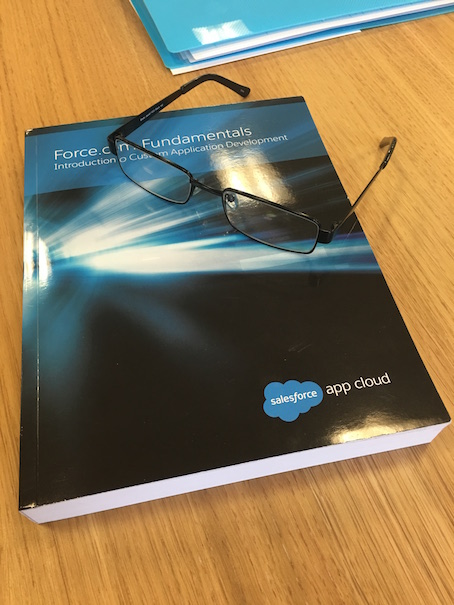How I came to be a Salesforce techie
What I did to get to where I am, the resources I use, and what lies ahead.

I’m now 18 months into Salesforce as a career path. What started out as a simple request from my boss at work to leverage my previous CRM experience and learn a little about Salesforce quickly turned into me discovering a new passion for my career as an IT professional.
Start with the basics
I started out as many new to Salesforce do, learning administration basics and going through the “Force.com Platform Fundamentals” book. I have a background in Siebel CRM environment administration (which I hadn’t touched for years), and instantly took to the familiar concepts of object relationships and the sales/conversion process, whilst at the same time grasping the cloud architecture of Salesforce.
Certification
At work, I put myself forward to work on Salesforce projects to bolster my understanding of the platform and also prepare myself for my Salesforce Certified Administrator exam. With so many potential clients asking for this certification as a pre-requisite to project work, it made sense to obtain it. Not only have I obtained my Administrator certification, but I’ve since (through both work experience and learning) obtained the Platform App Builder and Sales Cloud Consultant exams. Not only do these demonstrate my understanding of the declarative capabilities of the Force.com platform, but also how Force.com projects can be implemented accounting for the entire software delivery lifecycle.
I’m now in the process of working towards my developer certification, following 6 months of practical project experience, writing Apex code to integrate Salesforce into bespoke finance and products SaaS solutions. Having a grounding in the declarative nature of the Force.com platform has greatly helped in me determining the appropriate places to utilise Apex code to achieve custom functionality. With my developer journey now well under way, I’m now looking towards my Platform Developer I certification. I intend to take that before the year is out, to take my certification tally up to 4.
On the architect track
I’m a lucky guy, because I have a supportive boss. He realises the value of the Salesforce market and how experience twinned with solid, demonstrable expertise can mean you’re able to stand above the rest. To that end, he is supporting me on the journey to Technical Architect. This starts with me joining the Architect Academy and buying the book. The resources both included and linked to are invaluable in further deepening an understanding of the Force.com platform from a technical perspective.
The developer community
Bookmark https://developer.salesforce.com/en/ in your browser. It is single-handedly the best starting point for anything developer related. I always start here if I want to look at some blog posts, read forums, learn and more.
I am so, so happy I joined the developer community and have made myself known. I have asked questions on forums (and always have received helpful responses), and have joined my local Meetup group (there’s a Meetup page link through the community tab of the Salesforce Developer site). All I can I say to this is “go to a developer Meetup!” - You’ll be glad you did. I watched the TrailheaDX keynote at a developer Meetup this year. Cue the beer and pizza…
What I learn from
I have spoken here about the resources I use to learn about the Force.com platform. These are invaluable to my day-to-day learning.
Books
Developer community challenges
Blogs
- https://trailhead.salesforce.com/ - the best learning platform I’ve ever used!
- http://exploiteddevorgs.com/
- https://automationchampion.com
- http://www.salesforceben.com/
- http://www.adminhero.com/
- http://www.salesforcesaint.com/
- http://www.sfdc99.com/
- https://admin.salesforce.com/
- http://www.salesforceweek.ly/
- https://sfdc.co/b0hTzP - The Salesforce Developer Career eBook
Don’t just read. Learn by doing!
Of course, I cannot stress enough how important it is to learn by doing. Anyone can get a Developer Edition salesforce instance for FREE, so there’s really no excuse not to be learning by doing! Trailhead emphasizes this fact, giving you the theory and practical exercises which are completed and verified in your Developer Edition instance.
Where being a developer can take you
I recently wrote a blog post on a feature called Geocoding and how it can be used to help solve the travelling Salesperson challenge by plotting leads on a map that moves with the user. I have a sufficient level of understanding to be able to create lightening components and deploy them to the Salesforce1 mobile application. Oh, and by the way, I am speaking about it at Dreamforce this year - not bad for 18 months of working with the platform!
And finally…
I’m always on the hunt for new things to read. If there are things I should be looking at or taking notice of to further better my skills as a Salesforce developer, then please let me know.